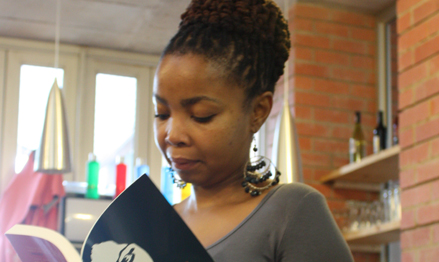Latest News Archive
Please select Category, Year, and then Month to display items
11 June 2021
|
Story Rulanzen Martin
|
Photo Courtesy of artists and the Johannes Stegmann Gallery.
![]()
Liminality is an exhibition of first-, second- and third-year student’s work in the
Department of Fine Arts at the University of the Free State (UFS). The works are from 2019 and 2020. Created during the hard lockdown of 2020, the artworks provide a glimpse of what students had to deal with and overcome during these times.
In a proposal for the exhibition, Angela de Jesus, Curator of the UFS Art Galleries, wrote: “The subtitle of the exhibition is ‘threshold, transition, transformation’ and it refers to the creative processes that students engaged with
in these adverse circumstances resulting in a wide array of artworks in both traditional and adapted mediums.”
The exhibition speaks to our shared experiences of insecurity, fragility, and discord, and to the resourcefulness and immutability of creative expression.
The virtual exhibition runs until 2 July 2021.
The exhibition is also currently available for viewing at the Johannes Stegmann Art Gallery, Sasol Library, UFS Bloemfontein Campus. Monday - Friday 09:00 - 16:00.
 MEGAN JOHNS, Battleground, Tobacco, charcoal dust, plaster of paris and resin, 93.5 x 50 x 7.5 cm
MEGAN JOHNS, Battleground, Tobacco, charcoal dust, plaster of paris and resin, 93.5 x 50 x 7.5 cm
 JACOBETH SELINGA, Linda, Installation: Found bed, wool and thread, 257 x 196 x 91 cm
JACOBETH SELINGA, Linda, Installation: Found bed, wool and thread, 257 x 196 x 91 cm
 POLOKO MOHANOE, Prayer for rain, Gouache on Fabriano, 66 x 72.8 cm
POLOKO MOHANOE, Prayer for rain, Gouache on Fabriano, 66 x 72.8 cm
 SEBOTSE SELAMULELA, In my image (Coronavirus head), Clay, 35 x 40 x 60 cm
SEBOTSE SELAMULELA, In my image (Coronavirus head), Clay, 35 x 40 x 60 cm
 WILLIAM SHAER, Creator, Deconstructed chair, koat wood and Imbura wood, 100 x 75 x 45 cm
WILLIAM SHAER, Creator, Deconstructed chair, koat wood and Imbura wood, 100 x 75 x 45 cm
 Johannes Stegmann Gallery
Johannes Stegmann Gallery
 Interior of the Johannes Stegmann Gallery
Interior of the Johannes Stegmann Gallery
Shushing, speaking, politicians, policing
2014-03-18
|

Prof Pumla Dineo Gqola
Photo: Michelle Nothling |
Feminist writer, scholar and previous Kovsie staff member, Prof Pumla Dineo Gqola, recently launched her book at the Bloemfontein Campus. “A Renegade Called Simphiwe” explores the life – and controversy – of singer Simphiwe Dana.
The book tells the story of Dana, a rebellious artist and cultural activist. But it also delves much deeper – into the fabric of our society itself. It questions our expectations and reactions to the things that make us shift in our seats.
The politics of silencing
Artists should not involve themselves in politics. They should stick to what they’re good at. Dana and other artists know this silencing finger being waved at them all too well. It is this mentality that alarms Prof Gqola. “I’m very disturbed by the notion of policing our – especially female – artists.” She pointed out that it is mostly female artists in SA who are put under scrutiny, reigned in and censored. Not only by politicians, though. Our public also quickly steps in when an artist seems to step out of ‘their place’.
The proper place of art
“I’m part of the movement that believes art transforms,” said Prof Gqola. South Africa used to be a fertile ground for protest art. This had an immense impact on political and social transformation. “Then something happened,” Prof Gqola let the words linger. “The arts got divorced from its social transformative power.”
Why has art been publically marginalised?
The question remains.